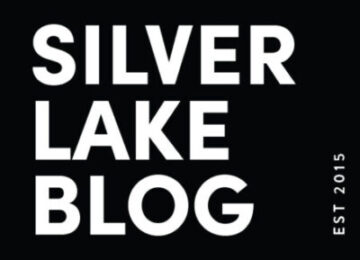Buying a home is one of the biggest things you’ll ever do — but it doesn’t have to be the most traumatic. This is where a great agent and fabulous loan officer come in. There are 3 steps to buying a house: 1) Figure out how much you can afford 2) Get a loan pre-approval and 3) Look for a house.
I have 2 preferred lenders who have all been tested, vetted and gone through trials by fire. They are the best in the business. If you’re buying a home in Los Angeles, you won’t find better. Since they’ll be at your side every step of the way, you should have a chat with one or both and determine who is the best fit. There is no cost or obligation to get a loan pre-approval.
Joe Tishkoff, NMLS # 252330, Skyline Home Loans, Los Angeles
O: 818-995-1700 Ext. 4252 | F: 818-971-4352
Please put together the documentation below as it applies to your scenario.
– Please allow 15-20 minutes to take an application over the phone
– 2 years of W-2s for all applicants
– 1 month of Pay Stubs for all applicants
– 2 months Asset Statements for all accounts on your application (savings, 401k, etc.)
– 2 years of Tax Returns or if you’re a business, 2 years of business returns
– 2 years of Job History
FICO scores fall between 300 and 850 with 60% of people landing between 650 and 799. Those in the 650-700 range are considered good. Scores between 700-750 is very good and 750 and up is considered great. Those with a “great” designation will get the most favorable rates and terms.
So how do I improve my score?
Contrary to popular belief, you do need a degree of credit card debt/activity. Have at least 3 major credit cards (i.e. Visa, Mastercard, AMEX), not debit cards, use them and pay them off on time. Make sure you don’t max out your cards; keep your balances under 35% of the total card limit. Payoff and eliminate any store credit charge cards (i.e. gas cards, Nordstrom, Macy’s, etc.). You need at least 2 years of solid credit history to qualify for any loan.
What kinds of loans are there and how much do I need to save?
You can get an FHA government backed loan with a FICO score of 500, but you’ll need at least 10% down. If you have great credit, you can buy with as low as 3.5% down. While FHA loans offer more favorable down payment options, you’ll have to also deal with paying mortgage insurance on top of your mortgage payment, taxes and property insurance. This amount will tack on several hundred dollars more per month. On the plus side, FHA can also lend on 2-4 units up to specified amounts with minimal down payment.
A conventional loan means you’re coming in with 20% down. You’ll get the best rates and terms and won’t be bogged down with paying mortgage insurance.
As far as savings, how much you need depends on the type of loan you’re gunning for. Depending on the loan, you’ll need between 3.5% to 20% saved for down payment. Additionally, you’ll be required by most banks to have another 3% saved for closing costs and 2 months of estimated mortgage payments.
Naturally, you want to get the best deal for the least amount of money. This holds true for mortgage rates as well.
A lower interest rate means a lower monthly mortgage payment, which can save you money in the long run. Also, it is easier to qualify for a lower payment than a higher one.
You basically have two routes to finding the best rate. The first is to do all the research on your own. The second is to use a mortgage broker. I work with skilled conventional loan officers and mortgage brokers.
Do-It-Yourself
With the invention of the Internet, much of this information is readily available online. Once you have educated yourself sufficiently about real estate loans, all it takes is the time and energy to sift through online resources to find the information you need.
Rates change quickly. That great rate you find today might not be there tomorrow. Once you find the rate you are looking for, submit a loan application and lock in that rate.
Some sources for interest rates on the Internet include:
When comparing loans, make sure that you’re comparing loans of the same type. For example, you find that “Loan A” for a 30-year loan has a much lower interest rate than “Loan B” (also for 30 years). Upon further inspection, you find that “Loan A” is technically an adjustable rate mortgage. Its payment is based on a 30-year amortization, but becomes due through either payment or refinancing at the end of 5 or 7 years. These are frequently referred to as a 5-year or 7-year fixed-rate mortgage. While both said “30-year”, they are not the same type of loan.
Ask the lender for a statement detailing all fees associated with the loan. Factors such as “points” (loan fee), interest rate and “garbage fees” (extra fees which some lenders charge) can vary greatly from one lender to another.
Mortgage Broker
If you do not have the time or experience to “do it yourself,” look for a qualified mortgage broker that can assist in finding the right mortgage for you. Ask friends and associates who have refinanced or purchased recently if they have a broker they can recommend. You’ll want to find a broker who is energetic, flexible and knowledgeable about finance and loans and someone who has your best interests in mind. I work with a smart mortgage broker and happy to make an introduction.
It is a good idea to keep in mind that any new credit purchases, including co-signing for a family member, may impact your ability to qualify for your new home purchase. If you have the majority of the documents, please send them along and the rest can follow.
How much home I can afford?
Start by using this home affordability calculator
Fortunately for buyers, there are a variety of mortgages to choose from. It is in your best interest to investigate each of them to determine which is the best for your situation. You probably won’t qualify for all of them. In fact, you may only qualify for one. But if you do qualify for more than one, you may save yourself money (and worry) in the long run if you do your homework before signing on the dotted line.
Fixed Rate Mortgages
Consider a fixed rate mortgage if either of the following describes you:
- You plan on living in your new home for many years, and/or
- You are not a risk-taker and prefer the stability of knowing how much your payment will be each month. Since most home loans are for a period of 30 years, if you want a payment you can count on for that long of a period of time, a fixed rate mortgage may be what works best for you. Once your loan amount and interest rate are calculated and locked in, a fixed rate mortgage will guarantee that you will have the same payment over the life of the loan. Making extra payments to principal will allow you to pay your loan off sooner. This may not always be the best choice, however. If interest rates are very high at the time you take out your loan, with a fixed rate mortgage you’ll be stuck with that high interest for the life of the loan (unless you choose to refinance). Conversely, if interest rates are very low, you’ll come out the winner with interest rates that will stay low no matter how high interest rates go in the future. The following are the advantages and disadvantages of the varying lengths and terms of fixed-rate mortgages:
15-Year Fixed-Rate:
- Pay off the loan in half the time of a 30-year loan.
- Equity builds up more quickly than in a 30-year loan.
- Payments are higher (which may be a problem if you lose your job or become unable to work).
20-Year Fixed-Rate:
- The overall interest paid is considerably less than for a 30-year loan.
- Pay off the loan in 2/3 the time of a 30-year loan.
30-Year Fixed-Rate:
- The most common choice, especially for first-time homebuyers, as it’s the easiest of the fixed-rate loans to qualify for.
- Monthly payments are lower than for 15-year and 20-year loans. This can prove especially helpful if you do not have a lot of”padding” between the amount you can afford to spend and the monthly payment for your desired property.
- More desirable if you plan on staying in the same home for years, since equity builds more slowly than for shorter-term loans.
- For income tax purposes, this term provides the maximum interest deduction.
Adjustable-Rate Mortgages (ARMs)
If you are more comfortable in taking a risk with your money or if interest rates are very high at the time you take out your loan, an adjustable-rate mortgage (ARM) may be the solution for you. You might also choose this type of loan if your planned ownership of the property is short-term or if you expect your income to increase to cover any potential rise in the interest rate. Generally, the interest rate when you take out your loan will be lower than a fixed-rate mortgage. Please note that this is true initially, not necessarily long-term. Since an ARM rate rises and falls depending on the prevailing interest rate, your mortgage payment will rise and fall accordingly. If your income is not sufficient to cover the highest possible payments, then this option is not for you. On the positive side, the lower initial payments will allow you to qualify for a larger loan than if you choose a fixed-rate. The downside is that your payments will increase if/when the rates go up. Typically, ARM interest rates are tied to a specific financial index (such as Certificate of Deposit index, Treasury or T-Bill rate, Cost of Funds-Indexed Arms or COFi, or LIBOR [London Interbank Offered Rate]) and your payment will be based on the index your lender uses plus a margin, generally of two to three points. Get the formula used by your lender in writing and make sure you understand what it means. Fortunately, the amount an ARM can increase is limited. There are “caps” on how much your lender can increase your rate, both for a period of one year and for the life of the loan. Plan ahead, and have your lender calculate what the maximum payment would be if your rate went to the highest amount allowed by the cap for your particular mortgage. If you are not confident you’ll be able to pay that amount on a monthly basis, perhaps you should reconsider this type of loan.
Convertible ARMs
If neither the fixed-rate or the adjustable-rate mortgage seems like the best option, perhaps the convertible ARM will be right for you. This alternative combines the initial advantage of an ARM with a fixed rate after a predetermined number of years. Obviously, this type of mortgage has more advantages when the initial interest rate is low and the future rate is not guaranteed.
Government Loans
Another mortgage option available to some people is a government loan, providing that you meet the qualifications for these loans.
VA Loans
Veterans may qualify for a loan from the Veterans Administration. There is a limit on the amount you can borrow, so this option works best for those buying a lower priced home.
FHA Loans
The Federal Housing Association offers loans to lower-income Americans. Look for the phrase “FHA approved”when looking at ads for homes.





